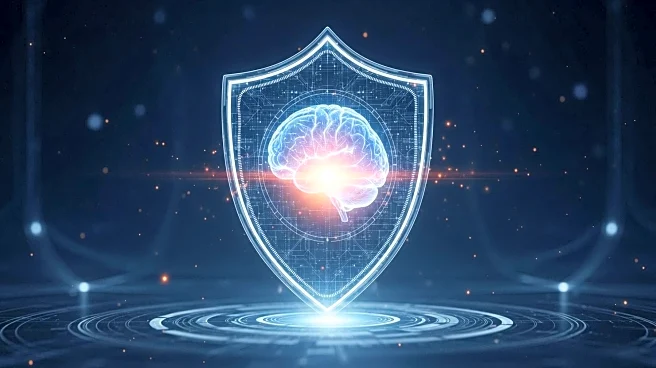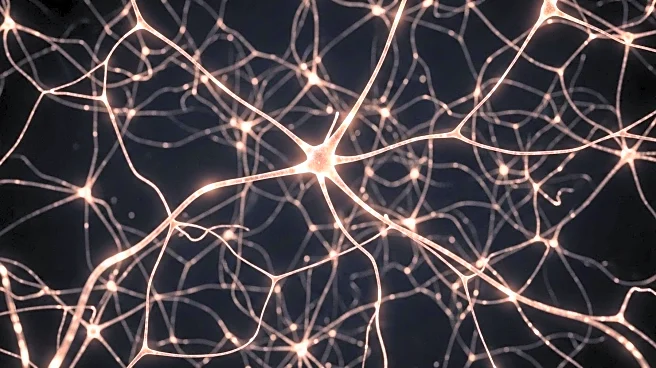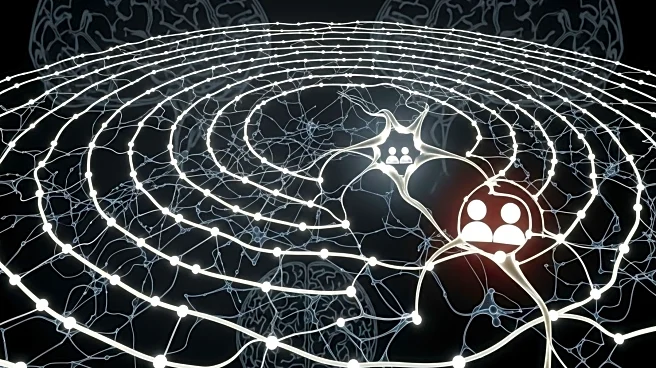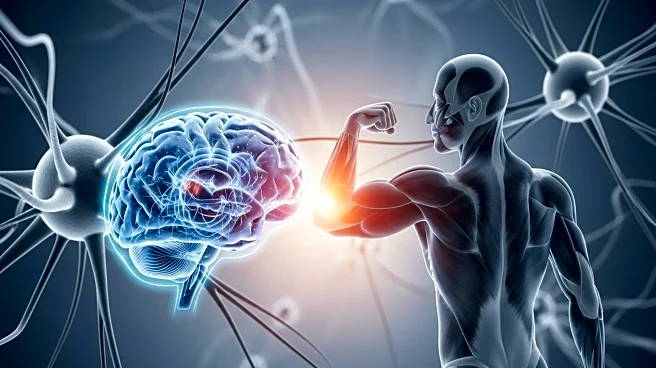What's Happening?
Recent research has identified distinct brain networks associated with aggression, utilizing neuroimaging techniques to map structural and functional abnormalities. The study highlights three key networks: the gray matter volume abnormality network, the task-induced activation abnormality network, and the resting-state activity abnormality network. These networks involve regions such as the insula, thalamus, and striatum, which play roles in sensory processing, emotional regulation, and decision-making. The findings aim to resolve discrepancies in previous neuroimaging studies and provide a comprehensive understanding of the neural mechanisms underlying aggression. This research represents a significant step toward developing targeted interventions to reduce aggressive behavior.
Why It's Important?
Understanding the neural basis of aggression is crucial for developing effective interventions. The identified networks could serve as clinical biomarkers, guiding noninvasive brain stimulation and informing pharmacological or psychological treatments. By targeting specific brain regions involved in aggression, such as the insula and thalamus, therapies can be more precise and potentially more effective. This research also highlights the importance of considering sex differences in aggression, as neural mechanisms may vary between males and females. The study's insights could lead to tailored interventions that address the unique neural substrates of aggression in different populations.
What's Next?
Future research should focus on refining intervention strategies based on these findings. Noninvasive brain stimulation techniques targeting the anterior cingulate cortex and other nodes within the salience network could be evaluated for their effectiveness in reducing aggression. Longitudinal studies are needed to map changes in brain networks pre- and post-intervention, providing insights into the neuroplasticity associated with aggression reduction. Additionally, exploring the development of these networks from childhood through adulthood could inform early intervention strategies. Combining neurostimulation with pharmacological agents may reveal synergistic effects, paving the way for precision-guided therapies.
Beyond the Headlines
The study underscores the complexity of aggression-related brain networks, suggesting that structural abnormalities may precede functional changes. This insight could lead to a deeper understanding of how aggression develops and persists. The research also highlights the potential for cognitive training to reorganize neuroplasticity within aggression-related networks, offering a non-pharmacological approach to reducing violence. Furthermore, the study calls for more research into sex-specific neural networks of aggression, which could enhance the development of gender-sensitive interventions.











